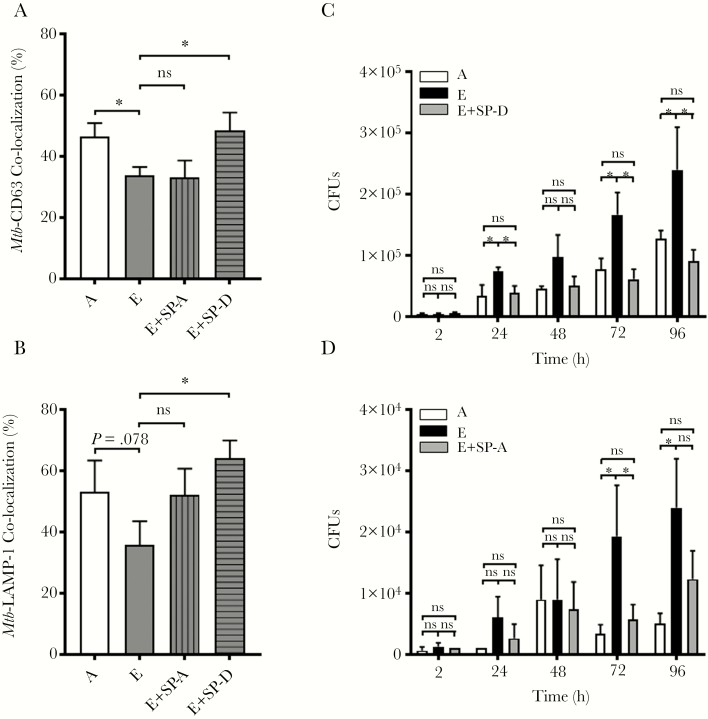Figure 4.
The enhanced growth of elderly alveolar lining fluid (E-ALF, “E”)–exposed Mycobacterium tuberculosis (Mtb) in human macrophages is associated with decreased phagosome–lysosome fusion and supplementation of E-ALF with functional surfactant protein A (SP-A) and surfactant protein D (SP-D) restores control and trafficking of Mtb. Human macrophages were adhered to glass coverslips and infected with adult alveolar lining fluid (A-ALF, “A”)– or E-ALF–exposed green fluorescent protein-Mtb (multiplicity of infection 10:1) for 2 hours. Cell monolayers were fixed, permeabilized, and stained with antihuman CD63 (A) or lysosomal-associated membrane protein (LAMP-1) (B). phagosome-lysosome (P-L) fusion events were visualized with confocal microscopy and enumerated by counting at least 50 independent events. Original magnification at ×600. Experiments from n = 8 (CD63, using 8 different monocyte-derived macrophage [MDM] human donors and 4 different A-ALFs and 4 different E-ALFs) and n = 3 (LAMP-1, using 3 different MDM human donors and 3 different A-ALFs and 3 different E-ALFs) performed in duplicate or triplicate, mean ± standard error of the mean; Student t test A-ALF vs E-ALF. *P < .05. C and D, Macrophages were infected (colony-forming units [CFUs]) as described above with A-ALF– or E-ALF–exposed Mtb, or E-ALF–exposed Mtb that had been replenished with functional SP-D or SP-A. Replenishment of E-ALF with SP-D led to significant decreases in bacterial burden and restored P-L fusion, whereas replenishment with SP-A had similar, albeit smaller effects. Representative experiment of n = 3 using 3 different human A-ALFs and 3 different E-ALFs performed in duplicate or triplicate, mean ± standard deviation; Student t test A-ALF vs E-ALF at each time point. *P < .05, **P < .005, ns, not significant.

